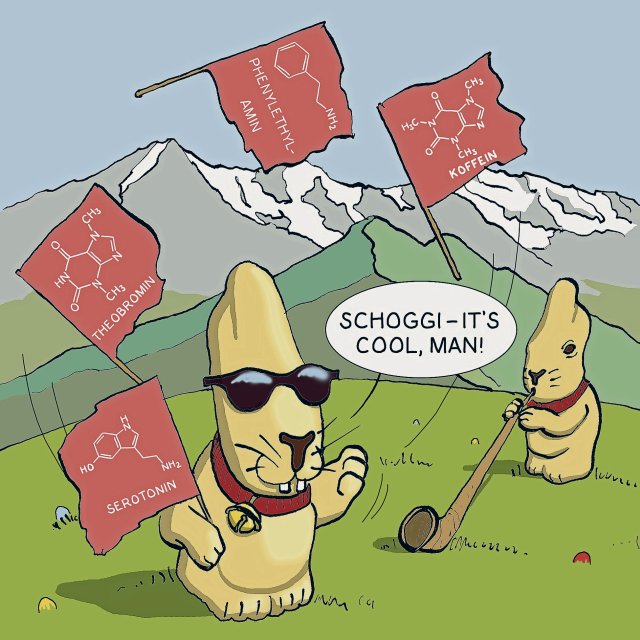Photo: Ekkehard Müller
Undoubtedly, chocolate eggs and bunnies, whether filled with “hollow bodies” or melt-in-the-mouth, are the most popular sweets at Easter.
But why is chocolate so irresistible for many people? Some people even describe themselves as “chocoholics”. And this despite the fact that chocolate addiction cannot actually exist. By definition, addiction only threatens when there is a drug. And that can’t be found in chocolate. At least not in the quantities that create dependency.
The natural, very bitter poison cocktail that protects the chocolate-producing cocoa beans against predators certainly contains substances with addictive potential: phenylethylamine, for example, which has a similar effect in our brain as ecstasy. But even several bars don’t contain enough of it to be addictive.
Or theobromine and its close relative, caffeine. Both differ by only one carbon atom and are derived from the same basic structure as adenine. The latter is not only contained in DNA and RNA, it is also part of the energy-providing ATP and many other compounds. When adenine is simply bonded to a sugar, ribose, it is called adenosine. This binds to receptors on the nerve endings and blocks the release of encouraging messenger substances. So it’s not surprising that caffeine and the more moderate theobromine, which both displace adenosine from the receptor, also brighten our mood. But a whole bar of chocolate contains less of both than caffeine in a cup of coffee.
It is not self-evident that the two substances drive away tiredness and invigorate us. If you wanted to share the chocolate treat with a pet – be it a dog or a cat – in the worst case scenario, it could even die. The dog or cat liver is unable to break down the toxins and so the substances fulfill their evolutionary mission in many animals.
Even the “happiness hormone” serotonin is out of the question as an addictive factor in chocolate. It cannot cross the blood-brain barrier. Only its precursor, the amino acid tryptophan, can do this, and chocolate contains only a small amount of it.
Ultimately, the only fact that remains is that chocolate consists of a good 30 percent fat and 50 percent sugar. And so the suspicion arises that these completely normal food ingredients trigger feelings of happiness as they melt pleasantly on our tongue.
But chocolate poses another mystery. It is by no means so popular everywhere in the world. The leaders are Switzerland, Belgium and Germany. Things look completely different in France or Italy. Are the reasons for their popularity not biochemical in nature? Is it perhaps “just” our tradition to which we owe our longing for chocolate?
#ndstays – Get active and order a promotional package
Regardless of whether it is pubs, cafés, festivals or other meeting places – we want to become more visible and reach everyone who values independent journalism with an attitude. We have put together a campaign package with stickers, flyers, posters and buttons that you can use to get active and support your newspaper.
To the promotional package
